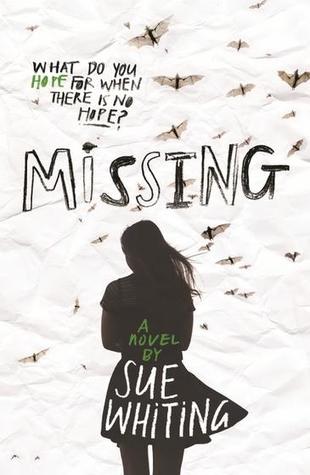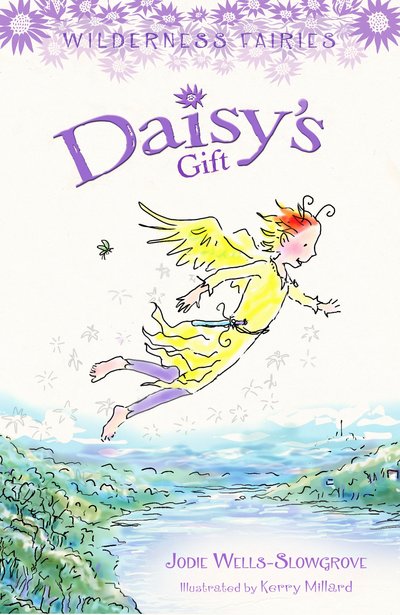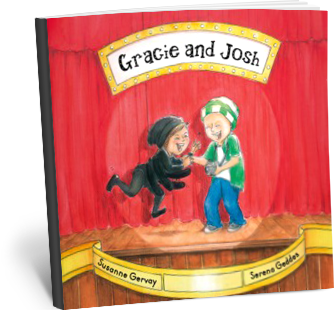On April 8, SCBWI peeps gathered at the beautiful Woollahra Library in Double Bay to talk about school visits….the good, the bad and the ugly.
Here’s how it panned out:
Mesmerising the Little Mites—with Susanne Gervay
When the Kids Run the Show—How to Get Your Audience Involved with Sarah Davis
A Recipe for Magic: Planning a Fantasy Story with Jodie Wells-Slowgrove
When Things Go Bad presented by Sue Whiting
Capturing Those Middle Graders with Deb Abela
Engaging Teens with Story with Sue Whiting
Author/Illustrator visits to schools can be fun and rewarding, as well as a perfect way to meet your audience, promote your work, increase your profile and earn extra money to enable you to keep creating. However, schools are not after a book promotion or a lecture. Presentations need to be stimulating and engaging, leaving students, teachers and librarians with inspiration and insights into reading, the process of creating books, and even creating their own works.
The Primary English Teachers Association of Australia have created a very practical manual on school visits. It has everything you need to know from how to organise a visit, classroom management tips and even notes on workshop ideas you can use in the classroom. Click here for the link.
Five SCBWI members with thousands of school visits between them, spoke about their experiences, their tips for a successful school visits and demonstrated a little of what they do in schools. It was fun and informative. Here is a summary of what was spoken about on the day.
Mesmerising the Little Mites—with Susanne Gervay
Who is your audience?
Young kids are keen to engage, answer questions, tell you their experiences. They love story. However, they can get over excited so you need to have a bag of tricks to keep them on track. Examples of this, include – ‘Put your hands on your head. Stand up and have a shake. Let’s all repeat a rhyme.’
You need to be entertaining, visual and if possible, lively.
Hands-on Presentation on ‘Gracie and Josh’ – a picture book.
Key techniques used by Susanne:-
Enthusiasm and welcome the kids.
Introduce yourself.
Ask them questions such as ‘Do you love books?’ (The children will give at times, strange, funny and personal answers. Respond and go with the flow.)
Have a powerpoint of the picture book, ‘Gracie and Josh’.
Use each page as a conversation – with questions about the illustrations and how they relate to the words.
Call kids out to the screen to show what they have discovered in the images.
Incy Wincy Spider weaves through ‘Gracie and Josh’. It underpins the theme that whatever adversity you face, you can climb that spout again. Never give up.
Incy Wincy Spider is sung by the audience, including teachers
As key theme issues arise, never tell kids how to respond. Ask questions, such as ‘How would you feel if that was you?’ ‘Would it be hard to be bald at school? Why?’ The kids will give often profound answers engaging in issues of friendship, inclusion, supporting siblings.
If there is time, the book can be read afterwards.
It’s always wonderful to end of another round of song – Incy Wincy Spider.
‘Gracie and Josh’ by Susanne Gervay, illustrated by Serena Geddes published by Ford Street Publishing
from 'Gracie and Josh' by Susanne Gervay
When the Kids Run the Show—How to Get Your Audience Involved with Sarah Davis
- Make it feel like a collaborative, shared experience - give the kids ownership, let them actively participate
- Keep it interactive
- Change pace, tone and focus regularly - mix it up to keep it interesting
- Make the experience as kinaesthetic as possible - get them moving wherever you can
- Appreciate and take advantage of the huge creative reservoir of your audience - kids have unfettered imaginations and a wonderful facility for lateral thinking, so use their input to drive the session.
A Recipe for Magic: Planning a Fantasy Story with Jodie Wells-Slowgrove
· Cater to the age of your audience. Here are some examples of how I approach each age group.
· Pre-school – Fun physical activities, only short readings, simple craft activities
Jodie in full flight!
· Infants – Readings can be longer but try and make them interactive, stopping now and then to engage the children. Props are very useful with this age group. Try and incorporate a few simple writing tips that they can take back and use in their own stories.
· Primary – Writing workshops varied for different ability levels. Give students the option to either draw or write where possible (when describing a character or setting) so that those who struggle with writing can still be engaged. Give students the chance to share their own ideas.
· Make your presentations as interactive as possible. Get students involved.
· Powerpoint presentations and props are a great way to remind yourself of what you want to say and avoid that dreaded moment where your mind goes blank and you freeze.
· Always have a non-technology based Plan B. Technology cannot be relied upon.
· Be yourself. Utilise whatever makes you and your books unique.
· For a more thorough coverage of all the aspects of organising and presenting author talks, you might want to read my blog post at https://www.jodiesbooks.com/blog/tips-for-successful-author-talks.
When Things Go Bad (And they will) presented by Sue Whiting
If you are prepared, organised, self-sufficient, and on time (i.e arriving 30 minutes prior to your session), the likelihood of things going wrong is dramatically reduced. But if things do go wrong, here are some tips:
· Be kind to yourself. Don’t beat yourself up or feel a failure if a session doesn’t go well. Take a deep breath, assess the situation, try to determine what went wrong and think of ways to improve, change or adapt your session for next time.
· If something isn’t working during a session and you realise it, don’t persist with it – quickly ditch it and move onto the next part of the session.
· Stay calm and be professional. Smile through adversity if you can and try your best to be accommodating and understanding.
· Be flexible; go with the flow. Schools are busy and chaotic places and sometimes “things” change at the last minute. If they do, just go with it.
· Always have a plan B. Preferably one that doesn’t involve technology.
· Over plan. This way you will always have more than enough material to fill a session.
· Use a microphone where possible – it really protects your voice and helps you to swiftly regain “control” or get the kids’ attention without having to resort to “tricks” or talking over the top of the kids.
· If you plan to use technology, invest in a “clicker” – they are so useful and really help to make the session run smoothly.
Capturing Those Middle Graders with Deborah Abela
Deb's tips for school visits are:
1. Be Prepared. Plan what you’re going to talk about, practice, make sure you have too much rather than too little material. I always have a point form plan nearby when I present.
2. Communicate with the school ahead of time to make sure you have all you need. Ask about technology you may need, (such as microphones or smartboards), age groups, session size, venue, whether the school wants a talk or a workshop and double check parking details. Arrive at the school at least 30 mins early to give yourself enough time to find the office, sign in and check all is in place. There is a more complete list here.
3. Present for the kids and adults. I aim for the kids to have fun and hopefully get excited about books and writing, while for the teachers and librarians, I hope they take away valuable tips on how I create books and writing tips they can use with their classes.
4. Getting to Know You. Kids love learning about you as a person as well as a creator. Telling personal stories makes you seem like a regular person, but also creates a bond between you and your audience. The stories may be funny, moving or about you as a kid. Also, read from your work. If it's a picture book, read the entire book, or have it on a Powerpoint for larger groups. If it's an older book, choose a passage that is only a few pages long and leaves the audience wanting more. This isn't always the opening page.
5. Enjoy the kids. Smile, even if you’re nervous. Especially if you’re nervous. School visits can be huge fun and a great visit can leave me feeling warm and fuzzy for days.
Engaging Teens with Story with Sue Whiting
Secondary audiences are very different to primary audiences. Generally, they are less responsive and harder to engage. (But they are usually quite intriguing too and not as scary as I thought they might be!)
I structure my session to play to my strengths – i.e. storytelling – and frame my talk around anecdotes/stories to demonstrate my points.
For my MISSING sessions I start with speaking to the audience as “adults” and discuss the seriousness of the content, and the story of the challenges I faced as an author. I don’t ask anything from the audience for about the first ten minutes, so they can get to know me a little. Then I ask them a general open-ended question: What are some situations where you might need to be brave? This isn’t necessarily too personal and there are no wrong answers, so it is a good one to invite a response, and start to engage the students.
I follow this by my “icebreaker” activity – The Panama Quiz. This is a slightly silly activity where I quiz five volunteers on their knowledge of Panama. I don’t make it too serious or demanding – the answers are multiple choice or true or false, but it hasn’t yet failed to loosen up the audience and by the end, everyone is fully engaged and relaxed. It also introduces the topic of how I conducted my research and what I needed to do to bring Panama to life in my book.
I use a lot of visuals and again frame my discussion about my research within a few an anecdotes/stories.
I then set the scene by telling the “story” of the last day Mackenzie hears from her mother. I use visuals, drumming music, dancing and a bit a drama to bring the Panama Independence Day parade to life. I try to encourage the students to participate in the singing, dancing and drumming, though some kids are too self-conscious to do this. Most are great and love it. If I think the students might not respond well to this silliness, I play it down and don’t encourage as much participation.
This then leads on to a serious discussion about the range of emotions Mackenzie may go through once she discovers her mother is missing, which then leads to discussion of the themes of grief, resilience, closure etc. I save these discussions to the end, when the students “trust” me and are relaxed and engaged. (So the structure of the session is very deliberate.)
I finish with question time. And by now, the students are full of questions. Though I do have a reading and another activity ready in case there are no questions.
Thank you Susanne Gervay and Kritsin Prescott for the pics.













